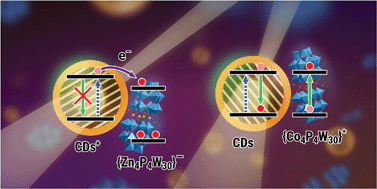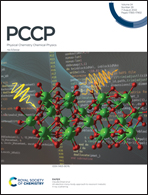Electron transfer between carbon dots and tetranuclear Dawson-derived sandwich polyanions†
Abstract
Among the photocatalysts which could be used for converting solar energy, polyoxometalates are often regarded as ideal candidates because of their remarkable performances in photocatalytic water splitting and photodegradation of pollutants. Nonetheless, these polyanions are only capable of absorbing UV light, unless coupled to a visible-light photosensitizer. Carbon nanodots are especially promising for this purpose because of their strong visible-light absorption, photostability, non-toxicity, and very low production costs. In this work we demonstrate the possibility of coupling carbon dots to polyoxometalates with different structures, by a simple self-assembly approach based on electrostatic interactions in solution phase. Our studies highlight an extremely efficient interaction between the two compounds, resulting in ultrafast photoinduced electron or energy transfer from carbon dots to the coupled polyoxometalates, depending on the structure of the latter, as revealed by a detailed study based on ultrafast transient absorption spectroscopy. The evidence herein provided shows how nanohybrids based on polyoxometalates photosensitized by carbon dots could find their place in photocatalytic applications, thanks to their remarkable efficiency and huge versatility.



 Please wait while we load your content...
Please wait while we load your content...